NOTE:
The Buluowan Suspension Bridge is closed due to severe damage caused by 403 Earthquake and typhoons in 2024. On April 3, 2024, a magnitude 7.2 earthquake struck Hualien, followed by the impact of Typhoon Kong-rey on October 31, causing severe damage to the park east section of Taroko Gorge (Taroko to Tianxiang).
Notice: Shanyuan Suspension Bridge renamed into Buluowan Suspension Bridge in May 2022. The first to the third version bridge was named Shanyuan Suspension Bridge during the Japanese Occupation.
Summary
Visitors arrive to the Buluowan Suspension Bridge by following the trail adjacent to the Buluowan Idas Hall. At a length of 196 m, a width of 2.5 m, and crossing the Liwu Valley at a height of about 152 m, the Buluowan Suspension Bridge is the longest and highest bridge in Taroko National Park. From the bridge, viewers can observe from above the twists and turns of the Liwu River that, flanked by the steep walls of the gorge, form a magnificent cascade of overlapping layers with a view that extends all the way from the gorge to faraway mountains. Towards the east, the trail overlooks the Xipan Dam section of the Liwu River Valley, while looking westwards, viewers can admire the precipitous, yet magnificent valley walls that characterize the terrain at Yanzikou (Swallow Grotto).
The Buluowan Suspension Bridge is part of the trail beginning from the Idas Hall at the Buluowan Service Center and ending at the observation platform on the northern bank crossing the Liwu River. The entire 500 m of the trail is accessible to those with disabilities, and is suitable for those using wheelchairs or pushing strollers.
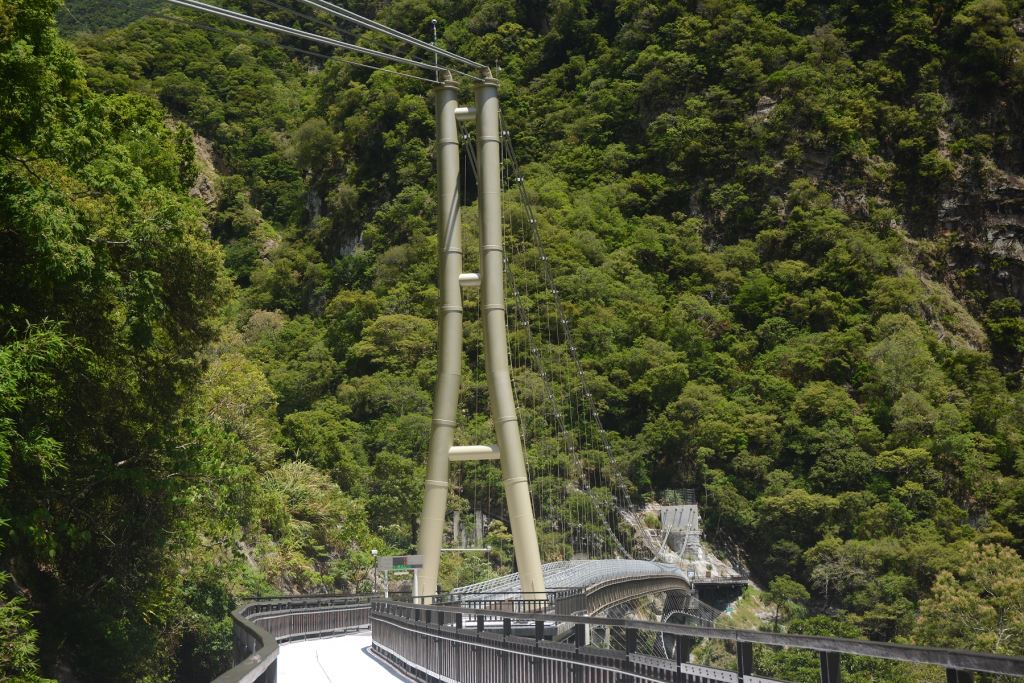
The Moon-character shaped tower on the Buluowan Suspension Bridge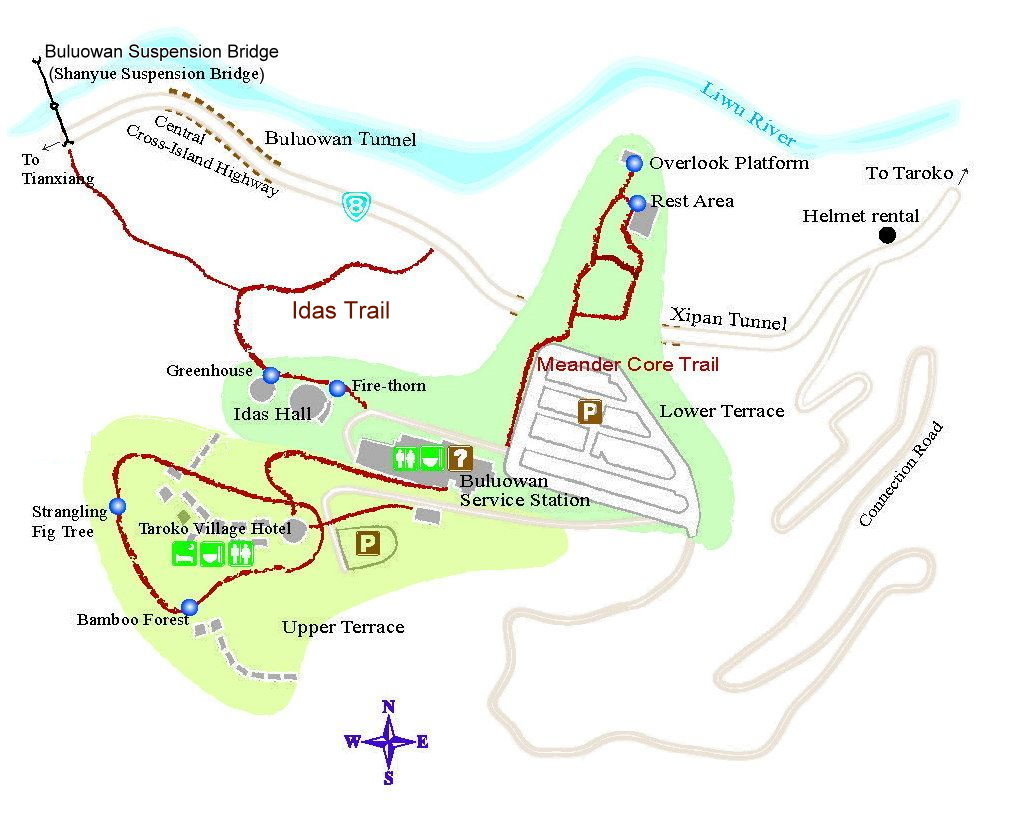
Buluowan Terrace Map
Geology
Having consistently undergone significant terrain uplift (tectonic movement) that resulted in an increasingly elevated river bed, the formation of the surrounding canyon terrain is a result of intensive river erosive (downcutting) activity of the Liwu River over geologic timescales. Asymmetric erosion of the cut bank of the river over time led to the formation of terraces on the opposing slip-off slope that are situated on former river beds, which remain today due to experiencing little erosion in comparison. The Buluowan Suspension Bridge, situated on the edge of the Buluowan Terrace, provides an excellent location from which viewers can observe the narrow marble canyon at Yanzikou (Swallow Grotto) and the Buluowan River Terrace, both contemporary results of such geologic activity.
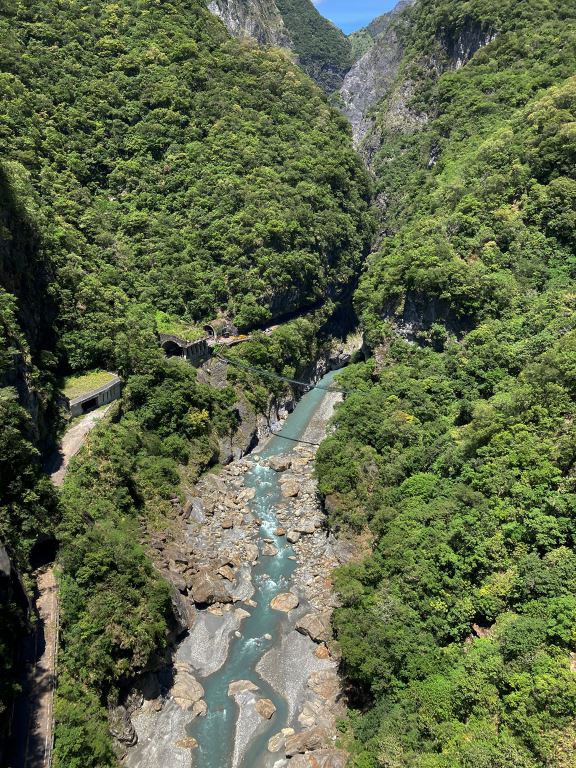
The Gorge Topography at Yanzikou (Swallow Grotto)
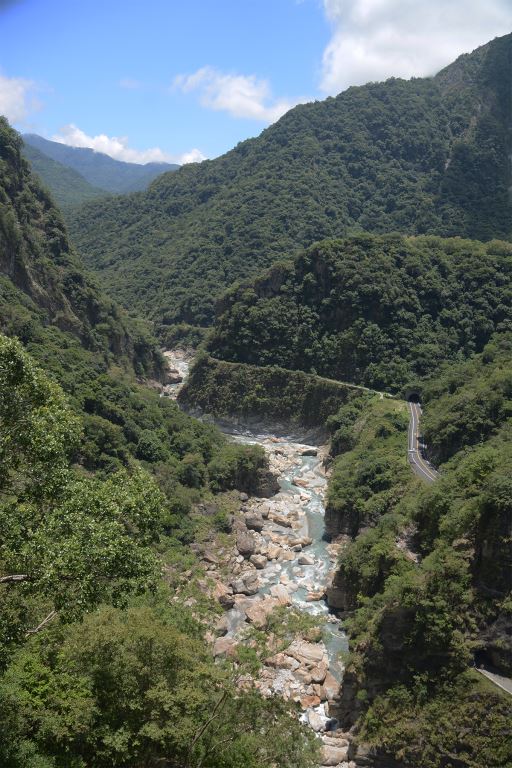
The Meander Core, Xipan, and the Liwu River Valley
Human Geography
From historical records and personal accounts, the Truku people migrated to the Liwu River Basin from the western side of the Central Mountain Range about 300 years ago as a result of insufficient arable land and hunting grounds, and within this group, two families established settlements on the upper and lower Buluowan terraces. An outpost was erected here in Buluowan during the Japanese Occupation Period (1895 – 1945) with the aim to hegemonize the indigenous population. After the 1930 Wushe Rebellion, the tribes were forcibly relocated from Buluowan to Xiulin Township’s Fushe and Xiulin Villages.
The current Buluowan Suspension Bridge represents the fourth version of the bridge (Shanyuan Suspension Bridge renamed into Buluowan Suspension Bridge in May 2022). The earliest suspension bridge, spanning 154 meters, was built in 1914 during the Truku War to aid arrogation and eventual occupation and governance over various communities living within the Liwu River Basin. This bridge was part of the Japanese “aiyong system”, a series of guard-lines with the primary purpose to subjugate indigenous mountain communities, and ultimately govern by force. The second generation of the Shanyuan Suspension Bridge was completed on December 20, 1930, spanning 190 meters long and 75 meters above the river valley. The development of cracks in the bridge’s foundation during the construction of the National Park’s gold mining trail resulted in a third version of the suspension bridge in 1941.
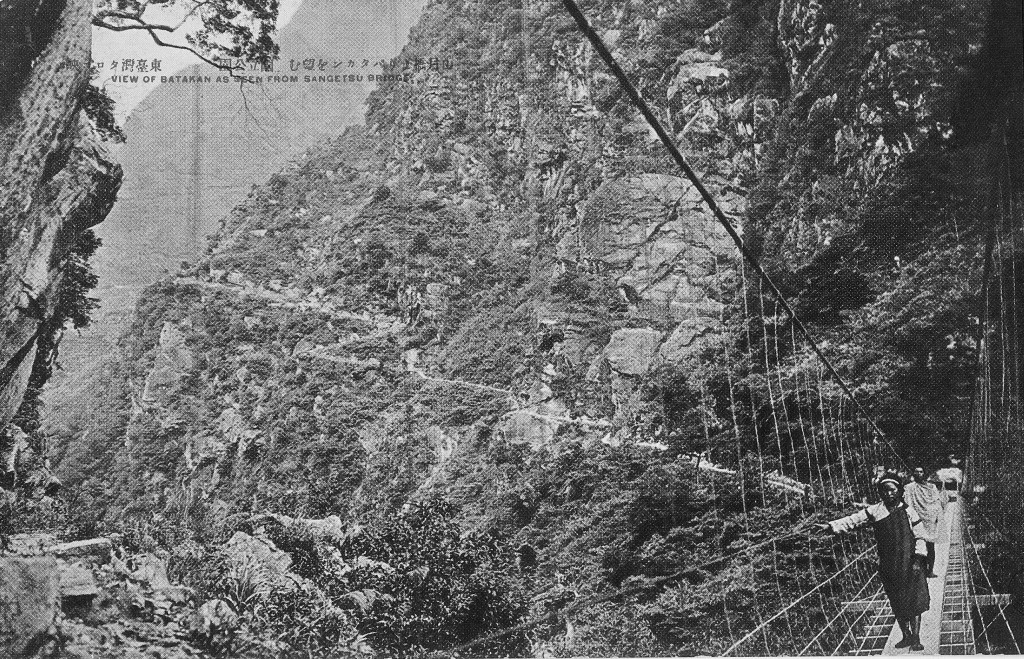
The Buluowan Suspension Bridge during the Japanese Occupation
During the Japanese Occupation Period, the Shanyue Bridge was the longest wire-cable suspension bridge in the Liwu River Catchment. Facing the cavernous Liwu River valley, crossing the bridge must have been undoubtedly thrilling. At that time, many of the Japanese police stationed in Inner Taroko, upon seeing the imposing height and length of the bridge, immediately resigned on the spot, earning it the nickname “resignation bridge”. Being presented with such a panoramic scene, those crossing the bridge have commented on the hardships especially associated with this portion of their journey.
The fourth and current version of the Buluowan Suspension Bridge was reconstructed to not only highlight the cultural history of Buluowan, but also to provide a panoramic site to view the gorge from various angles and thereby facilitate the dispersal and distribution of visitors. The trail was designed with accessibility in mind, so that everyone, including those with disabilities, the elderly, and infants, can easily and safely experience the magnificent views of the gorge.
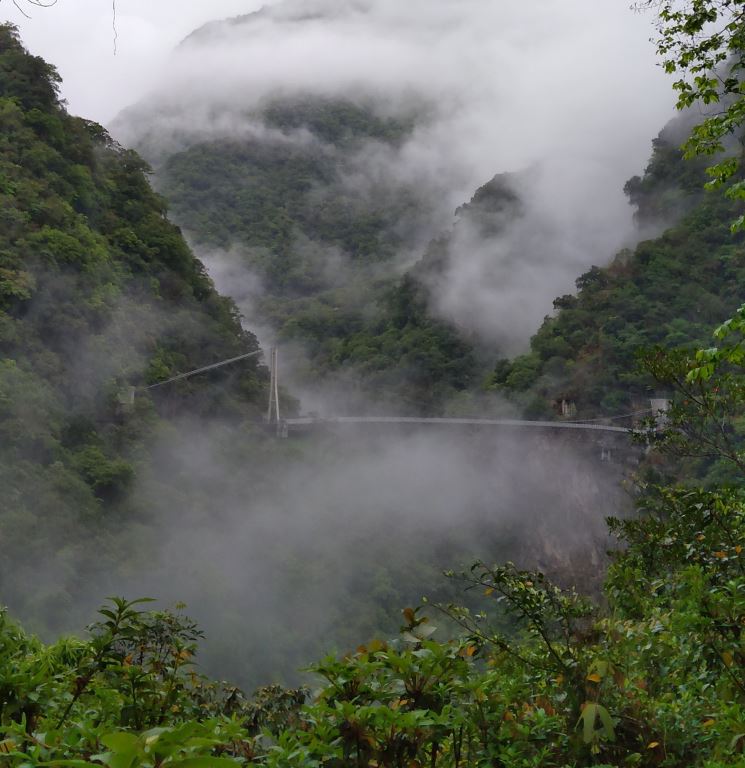
The Buluowan Bridge as viewed from the Meander Core
The Buluowan Suspension Bridge and the Buluowan Terrace